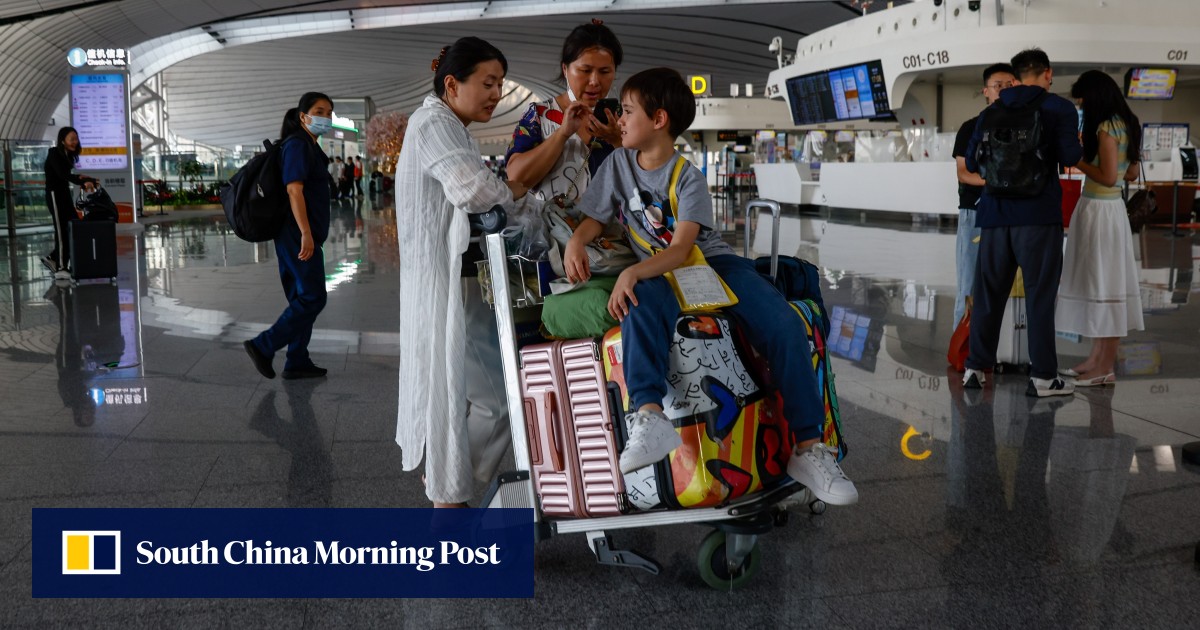China's fiscal revenue increased by 11.5% in the first seven months of 2023, but the growth rate was slower than the previous six months, indicating a potential decline in the economy's momentum.
China's economy, which has been a model of growth for the past 40 years, is facing deep distress and its long era of rapid economic expansion may be coming to an end, marked by slow growth, unfavorable demographics, and a growing divide with the US and its allies, according to the Wall Street Journal.
China faces challenges in rebalancing its economy towards increased consumer spending due to the economic growth model that relies heavily on investment in property, infrastructure, and industry, as well as the reluctance of households to spend and the limited social safety net; implementing demand-side measures would require difficult decisions and potential short-term pain for businesses and the government sector.
China is implementing measures to boost household spending, ease property policies, increase car purchases, improve conditions for private businesses, and bolster financial markets in an effort to revive the economy's recovery and improve the business environment.
China's economy is struggling due to an imbalance between investments and consumption, resulting in increased debt and limited household spending, and without a shift towards consumption and increased policy measures, the economic slowdown may have profound consequences for China and the world.
Consumer spending in China rebounded in August, with all categories, including apparel, automotive, food, furniture, appliances, and luxury, experiencing increased sales compared to July, according to a survey by the China Beige Book. Retail sales in July rose by 2.5% year-on-year, raising concerns about China's economic growth, but the August survey showed a surge in spending, particularly in the services sector, which saw continued strength in travel and hospitality. Additionally, corporate borrowing increased as the cost of capital declined, indicating a boost in business activity. However, China's property sector continued to worsen, with house prices barely growing and home sales declining.
China's factory activity contracted for the fifth consecutive month in August, indicating that the slowdown in the country's economy has not yet reached its lowest point.
China's factory activity contracted for a fifth consecutive month, putting pressure on Beijing to implement more stimulus measures, while evidence of other weakening areas of the economy raises concerns of a renewed slowdown later this year.
Chinese factory activity unexpectedly grew in August, fueled by improving local demand and an increase in new orders, although the Chinese economy still faces challenges due to weak external demand and a potential real estate crisis.
Investor sentiment on China weakens as new data reveals slowest expansion in services activity in eight months, dragging down markets and raising concerns about the country's economy.
China's services sector experienced a slowdown in business activity, resulting in the lowest level in eight months, as weaker foreign demand and sluggish overseas orders impacted consumption, despite economic stimulus efforts.
China's economic growth has slowed but has not collapsed, and while there are concerns about financial risks and a potential property crisis, there are also bright spots such as the growth of the new energy and technology sectors that could boost the economy.
Policymakers expect slower growth in China, potentially below 4%, as the country transitions to a consumption-driven economy, which could have a negative impact on the global economy and alleviate inflationary pressures.
China's exports and imports continued to decline in August due to weak overseas demand and sluggish consumer spending, posing challenges to the country's economic growth targets.
China's consumer prices rose slightly and the decline in factory-gate prices slowed in August, indicating easing deflation pressures and signs of stabilization in the economy, although more policy support is needed to boost consumer demand.
China's credit is expanding rapidly, with total social financing increasing by over 3 trillion yuan in August, mainly driven by government financing, indicating positive signs of economic stabilization and recovery from the slump in the second quarter. Additionally, recent policy measures, particularly in fiscal and property sectors, are expected to further stimulate the economy.
